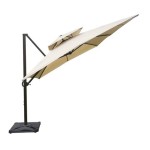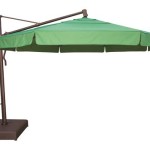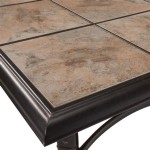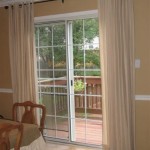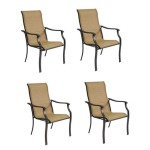```html
Best Outdoor Electric Patio Heaters: A Comprehensive Guide
Extending the use of patios and outdoor spaces beyond the warmer months has become increasingly popular. Electric patio heaters offer a clean, efficient, and convenient solution for providing warmth and comfort during cooler periods. These heaters come in various styles, power levels, and features, requiring careful consideration to select the optimal unit for a specific outdoor environment. This article provides a detailed overview of crucial factors to consider when selecting the best outdoor electric patio heater.
Understanding Electric Patio Heater Types
Electric patio heaters are categorized based on their design and heating technology. The primary types include infrared, halogen, and quartz heaters. Each type offers distinct advantages and disadvantages regarding heating efficiency, area coverage, and aesthetic appeal.
Infrared Heaters: Infrared heaters emit radiant heat, directly warming objects and people within their range. They are less affected by wind than traditional convection heaters because they do not heat the air. Instead, they transfer energy directly to surfaces. This makes them suitable for exposed outdoor areas. Infrared heaters are generally energy-efficient, as they do not waste energy heating the air around the targeted area. They can also use different types of bulbs, including carbon fiber and metal sheath elements, each offering varying degrees of heat intensity and bulb lifespan.
Halogen Heaters: Halogen heaters use halogen bulbs to generate heat. They provide instant heat and are relatively inexpensive to purchase. However, halogen heaters tend to have a shorter lifespan than other types, and the bulbs can be fragile. They also emit a bright orange light, which some users may find distracting. While they deliver quick warmth, their energy efficiency is generally lower compared to infrared models, and they may not be the best choice for prolonged use in larger outdoor spaces.
Quartz Heaters: Quartz heaters utilize quartz tubes to produce heat. They are similar to halogen heaters in that they provide rapid heating and are relatively affordable. Quartz heaters typically have a longer lifespan than halogen heaters and are more robust. They also produce a less intense light. However, they still aren't as energy-efficient as infrared heaters. Quartz heaters are a good middle-ground option, offering a balance between cost, performance, and lifespan.
Key Considerations for Selecting an Electric Patio Heater
Choosing the right electric patio heater involves evaluating several factors to ensure it meets the specific needs of the outdoor space. Key considerations include heating area, power output, mounting options, safety features, and weather resistance.
Heating Area and Power Output: The size of the area requiring heat significantly influences the required power output of the heater. Manufacturers typically specify the heating area or coverage in square feet for each model. It is crucial to select a heater with sufficient power to adequately heat the intended space. Undersized heaters will struggle to provide adequate warmth, while oversized heaters may consume excessive energy and create an uncomfortably hot environment. Generally, a larger patio requires a heater with higher wattage or multiple heaters strategically placed to ensure even heat distribution. Consider the typical occupancy of the space when determining heating needs; a larger group of people will require more heat output than a smaller gathering.
Mounting Options: Electric patio heaters are available in various mounting configurations, including freestanding, wall-mounted, and ceiling-mounted options. Freestanding heaters are portable and can be easily moved to different locations. Wall-mounted heaters save floor space and provide a more permanent heating solution. Ceiling-mounted heaters offer discreet heating and can be particularly effective for covered patios or gazebos. The chosen mounting option should be compatible with the existing structure and provide optimal heat distribution. Consider the availability of power outlets and the ease of installation when selecting a mounting option. Furthermore, safety considerations should be paramount; ensure the chosen mounting location provides ample clearance from flammable materials and prevents accidental contact with the heater.
Safety Features: Safety is a paramount concern when using electric patio heaters. Features to look for include tip-over protection, overheat protection, and cool-touch housings. Tip-over protection automatically shuts off the heater if it is accidentally knocked over, preventing potential fire hazards. Overheat protection prevents the heater from overheating and causing a malfunction. Cool-touch housings prevent burns from accidental contact with the heater surface. Look for heaters that have been certified by recognized safety organizations such as UL, ETL, or CSA. These certifications indicate that the heater has been tested and meets established safety standards. Properly maintaining the heater, including regularly cleaning it and inspecting the power cord, also contributes to safety.
Weather Resistance: Outdoor electric patio heaters are exposed to various weather conditions, including rain, snow, and wind. It's important to choose a heater with appropriate weather resistance to ensure durability and longevity. Look for heaters with an IP (Ingress Protection) rating that indicates their resistance to water and dust. A higher IP rating signifies greater protection. For example, an IPX4 rating indicates that the heater is protected against splashing water from any direction. Selecting a heater with weather resistance protects the internal components from damage and reduces the risk of electrical hazards. Consider the climate in the specific region when determining the required level of weather resistance. Areas with frequent rain or snow will require a heater with a higher IP rating than regions with drier climates.
Evaluating Operational Costs and Energy Efficiency
The operating cost of an electric patio heater is a significant consideration. While electric heaters are generally more environmentally friendly than propane or natural gas heaters, it's important to understand the energy consumption and related costs.
Wattage and Energy Consumption: Electric patio heaters are rated by their wattage, which indicates the amount of power they consume. Higher wattage heaters provide more heat but also consume more electricity. To estimate the operating cost, multiply the heater's wattage by the number of hours it will be used and then multiply by the cost per kilowatt-hour (kWh) of electricity. For example, a 1500-watt heater used for 4 hours at a cost of $0.15 per kWh would cost $0.90 to operate (1.5 kW x 4 hours x $0.15/kWh = $0.90). Consider the frequency and duration of heater use when estimating the total operating cost. Energy-efficient heaters, such as those using infrared technology, can help reduce operating costs by providing more heat with less energy consumption.
Energy Efficiency Features: Some electric patio heaters incorporate energy-saving features, such as adjustable heat settings and timers. Adjustable heat settings allow users to reduce the heat output when full power is not needed, conserving energy. Timers automatically shut off the heater after a predetermined amount of time, preventing unnecessary energy consumption. Look for heaters with these features to optimize energy efficiency and reduce operating costs. Smart heaters can be controlled remotely via a smartphone app, allowing for convenient scheduling and energy monitoring. These features can help users manage their energy consumption and lower their utility bills. Furthermore, correctly positioning the heater to maximize heat distribution and minimize heat loss can also improve energy efficiency.
Long-Term Cost Analysis: In addition to the operating cost, consider the long-term cost of ownership, including the initial purchase price and potential maintenance or repair costs. While some heaters may have a lower initial cost, they may have a shorter lifespan or higher maintenance requirements. Conversely, more expensive heaters may offer greater durability, energy efficiency, and longer lifespans, resulting in lower overall costs over time. Consider the warranty offered by the manufacturer as an indicator of the heater's durability and reliability. Reading customer reviews can provide insights into the real-world performance and potential issues with different models. A comprehensive cost analysis will help inform decision-making and ensure the selection of the best value electric patio heater.
```
The 5 Best Outdoor Patio Heaters Of 2025 Reviews By Wirecutter

The 5 Best Outdoor Patio Heaters Of 2025 Reviews By Wirecutter

Unbranded 1500 Watt Free Standing Infrared Electric Patio Heater Hil 1500di

Best Patio Heaters 2025 Tried And Tested For All Gardens The Independent

Energ Up To 1400 Watt Infrared Utility Indoor Outdoor Electric Space Heater Hea 14756 At Lowes Com

The 5 Best Outdoor Patio Heaters Of 2025 Reviews By Wirecutter

How To Choose A Patio Heater Outdoor Heating Options

10 Best Patio Heaters To Buy In 2024 Electric And Gas Heat Lamp

Patio Heaters Best Gas And Electric Outdoor For 2024

The Best Electric Outdoor Heaters That Keep You Cosy
See Also



